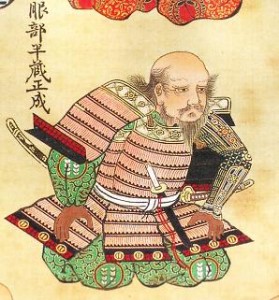Xlibris Publishing returns with part 2 of Ninjas: The Warriors in Shadow.
Historical Ninjas
It is interesting to note that while the existence and use of ninjas had existed before, most of the time they were simply peasants, criminals, and samurai employed to perform the usual tasks of the ninja. It was not until the development of the Iga and Koga families that ninjas were trained as professionals, trained to be ninjas.
Famed throughout folklore and media, the Iga and the Koga have been regarded and portrayed as the penultimate ninjas. Originating in neighboring regions for which the two families share their name, the two clans were among the first to actually train as a ninjas to offer their professional services as mercenaries. It is likely the Iga and the Koga took advantage of the remoteness and inaccessibility of their home territories to protect the secrets of their training and methods. Between the years 1485 and 1581 (almost a hundred years), the Iga and the Koga provided the great lords of Japan with mercenaries, spies, and assassins, until their destruction at the hands of the warlord Oda Nobunaga. But this was not the end of the ninja.

The ninjas became scattered, finding refuge and service in other parts of Japan. Of these ninja who were scattered, the most famous of them was Hattori Hanzo. Hanzo was a member of the Iga clan, part of a band of escaping refugees who found their way under the protection of one Tokugawa Ieyasu. In his service to Tokugawa, Hattori Hanzo’s deeds made him arguably the most famous ninja in history.
Hattori Hanzo’s deeds include rescuing Tokugawa’s daughters when they were held hostage by an enemy lord. When Tokugawa was trapped and besieged in his own castle by an enemy army, Hanzo led a bold skirmish that succeeded in throwing the enemy into disarray and retreat. Later, following treachery by supposed allies, Tokugawa found himself trapped and surrounded by his enemies. Again it was Hattori Hanzo to the rescue, using knowledge of secret paths and routes to lead Tokugawa to safety beneath their enemy’s nose. Interestingly, as all this took place during the Sengoku Period, a time when samurai lords were betraying each other and changing loyalties frequently, it was the ninjas who were utterly loyal to their lords.
Conclusion
Ninjas have achieved, through stealth or guile, an interesting place in fiction. The combination of history, myth, and lore has created a unique figure for writers to use in their stories. It is important for authors to know, when writing about ninja, where they stand on the border between fact and folklore so they can best write the book of their choice.
Xlibris Publishing trusts this helps
Please make sure to check out the Xlibris Publishing site for more advice and blogs, and be sure to follow us on Xlibris Publishing Facebook and Xlibris Publishing Twitter. Get your free publishing guide here.
By Ian Smith


This excellent website certainly has all the information I needed about this subject and didn’t know who to ask.